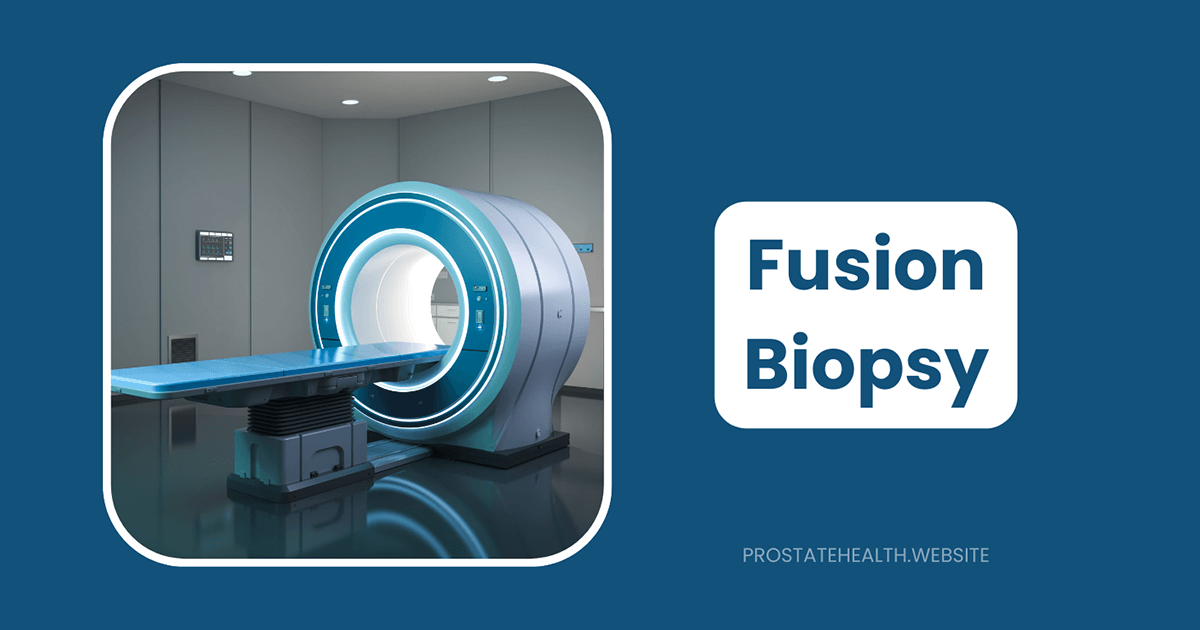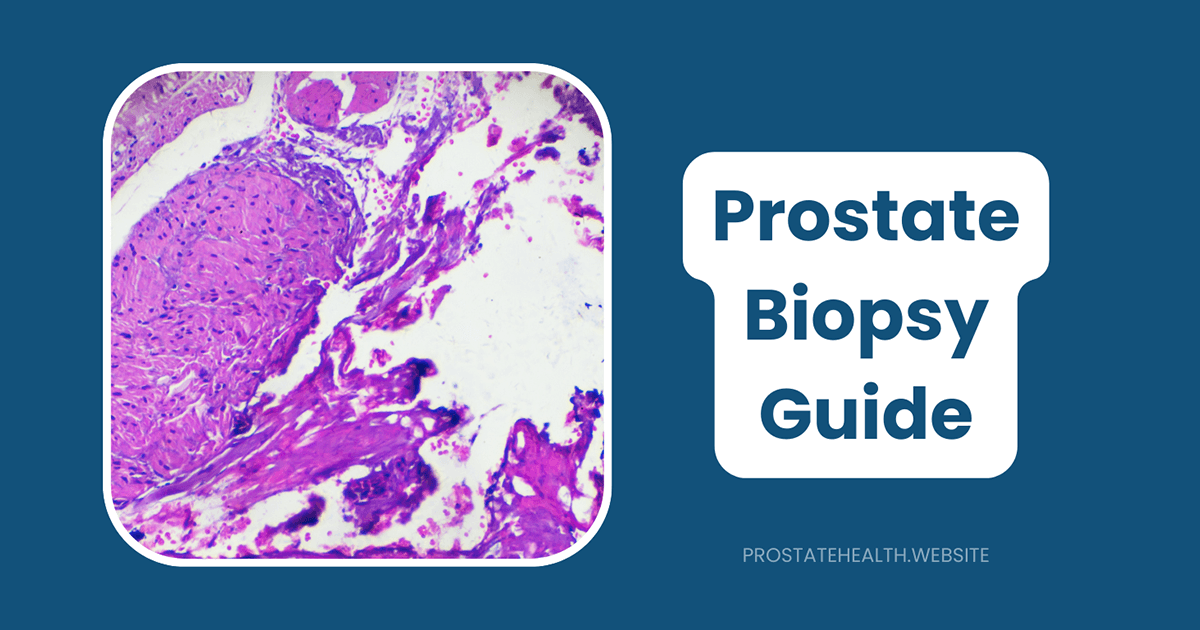Understanding Your Gleason Score and What It Means for Treatment

When you’re diagnosed with prostate cancer, one of the first things you’ll encounter is your Gleason score. This number might seem like just another medical term in a sea of confusing information, but it’s actually one of the most important factors that will guide your treatment journey.
As someone who’s spoken with hundreds of men navigating prostate cancer diagnosis and treatment, I know firsthand how overwhelming this information can be. Many men tell me they nodded along when their doctor explained their Gleason score, only to leave the office wondering, “What does this number really mean for me?”
This guide will help demystify the Gleason score, explain how it influences treatment decisions, and empower you to have more informed conversations with your healthcare team.
What Is the Gleason Score?
The Gleason score is named after Dr. Donald Gleason, who developed this grading system in the 1960s. It remains one of the most powerful predictors of prostate cancer behavior and outcomes.
When a pathologist examines your prostate biopsy samples under a microscope, they’re looking at how the cancer cells are arranged and how they differ from normal prostate cells. The more abnormal and disorganized the cells appear, the higher the grade.
How the Gleason Score Is Calculated
The pathologist assigns a grade from 1 to 5 to the two most common patterns of cancer cells seen in your samples:
- Grade 1: Cells look very similar to normal prostate cells (well-differentiated)
- Grade 2: Cells are still fairly organized but show some abnormalities
- Grade 3: Cells show moderate abnormalities and disorganization
- Grade 4: Cells appear quite abnormal and disorganized
- Grade 5: Cells are completely disorganized and bear little resemblance to normal prostate tissue (poorly differentiated)
These two grades are then added together to create your Gleason score, which ranges from 6 to 10. (While technically the score could be as low as 2, in modern practice, scores below 6 are rarely if ever assigned.)
For example:
- If your most common pattern is grade 3 and your second most common is also grade 3, your Gleason score would be 3+3=6
- If your most common pattern is grade 3 and your second most common is grade 4, your Gleason score would be 3+4=7
- If your most common pattern is grade 4 and your second most common is grade 3, your Gleason score would be 4+3=7
Notice that the order matters. A 3+4=7 and a 4+3=7 are both Gleason 7, but they have different implications for your cancer’s behavior.
The Grade Group System: A Clearer Picture
In 2014, the International Society of Urological Pathology introduced the Grade Group system to make Gleason scores more intuitive and better reflect their clinical significance. This system has now been adopted by major cancer organizations worldwide and is included in the 2025 guidelines.
The Grade Group system categorizes Gleason scores into five distinct groups:
| Grade Group | Gleason Score | What It Means |
| 1 | 6 (3+3) | Very slow-growing cancer with excellent prognosis |
| 2 | 7 (3+4) | Mostly well-formed glands with some poorly-formed glands |
| 3 | 7 (4+3) | Predominantly poorly-formed glands with some well-formed glands |
| 4 | 8 (4+4, 3+5, or 5+3) | Poorly-formed glands or lacking gland formation |
| 5 | 9-10 (4+5, 5+4, or 5+5) | Lacking gland formation or with necrosis |
This system makes it clearer that Gleason 6 cancer has a very favorable prognosis (Grade Group 1), while also distinguishing between the two types of Gleason 7 cancers (Grade Groups 2 and 3), which can behave quite differently.
As Robert, a 62-year-old patient, told me: “When my doctor said I had a Gleason 7, I was terrified. But then he explained it was a 3+4, Grade Group 2, which has a much better outlook than a 4+3. That distinction made all the difference in understanding my diagnosis.”
How Your Gleason Score Influences Treatment Decisions
Your Gleason score is one of the three key factors (along with PSA level and clinical stage) that determine your risk group and guide treatment recommendations. Here’s how the 2025 guidelines generally approach treatment based on Gleason scores:
Grade Group 1 (Gleason 6)
For men with Grade Group 1 cancer, which represents very low to low-risk disease:
- Active surveillance is typically the preferred approach
- This involves regular monitoring with PSA tests, digital rectal exams, and periodic biopsies or MRIs
- The goal is to avoid or delay treatment and its potential side effects unless the cancer shows signs of progression
- According to the landmark ProtecT study published in the New England Journal of Medicine, men with low-risk prostate cancer who chose active surveillance had the same 15-year survival rates as those who underwent immediate surgery or radiation
As Michael, a 58-year-old with Grade Group 1 cancer, shared: “When I was diagnosed three years ago, my doctor recommended active surveillance. I get regular check-ups, and so far, my cancer hasn’t grown. I’ve been able to avoid treatment side effects while still keeping a close eye on things.”
Grade Group 2 (Gleason 3+4=7)
For men with Grade Group 2 cancer, which represents favorable intermediate-risk disease:
- Active surveillance may still be appropriate for some men, particularly those who are older or have other health concerns
- Radical prostatectomy (surgical removal of the prostate) is a common option
- Radiation therapy (external beam or brachytherapy) is another effective approach
- The 2025 guidelines note that about 70% of men with favorable intermediate-risk disease may safely consider active surveillance based on recent biomarker studies
Grade Group 3 (Gleason 4+3=7)
For men with Grade Group 3 cancer, which represents unfavorable intermediate-risk disease:
- Radical prostatectomy with possible lymph node removal
- Radiation therapy (often combined with short-term hormone therapy)
- Active surveillance is generally not recommended unless there are compelling reasons to avoid treatment
Grade Group 4-5 (Gleason 8-10)
For men with Grade Group 4 or 5 cancer, which represents high or very high-risk disease:
- Multimodal treatment approaches are typically recommended
- Radiation therapy combined with longer-term hormone therapy (2-3 years)
- Radical prostatectomy with lymph node removal, possibly followed by additional therapy based on surgical findings
- Clinical trials may offer access to newer treatment approaches
Beyond the Gleason Score: Other Factors That Influence Treatment
While the Gleason score is crucial, it’s just one piece of the puzzle. Your treatment plan will be influenced by several other factors:
1. PSA Level and Kinetics
- Your absolute PSA level at diagnosis
- How quickly your PSA has been rising (PSA velocity)
- How your PSA relates to your prostate size (PSA density)
2. Clinical Stage
- Whether the cancer is confined to the prostate (T1-T2)
- Whether it extends beyond the prostate capsule (T3)
- Whether it involves nearby structures (T4)
- Whether it has spread to lymph nodes (N1) or distant sites (M1)
3. Tumor Volume
- The number of biopsy cores containing cancer
- The percentage of each core involved with cancer
- Findings on MRI regarding the size and location of tumor(s)
4. Your Age and Overall Health
- Your life expectancy (treatments with curative intent are generally recommended if life expectancy exceeds 10 years)
- Other medical conditions that might affect treatment tolerance
- Your overall fitness and ability to recover from surgery or other treatments
5. Your Preferences and Values
- How you weigh potential side effects against treatment benefits
- Your comfort level with different approaches (active surveillance vs. immediate treatment)
- Your personal goals and priorities
6. Genomic Testing
Newer genomic tests can provide additional information about your cancer’s aggressiveness beyond what the Gleason score tells us. According to the 2025 ASTRO guidelines, these include:
- Decipher Prostate: Analyzes 22 genes to predict metastasis risk
- Prolaris: Examines 31 genes to predict mortality risk with active surveillance
- Oncotype DX GPS: Evaluates 17 genes to predict finding higher-grade cancer at surgery
- ArteraAI: Combines digital analysis of biopsy images with clinical information
These tests can be particularly helpful for men with intermediate-risk disease (Grade Groups 2-3) where the best treatment approach isn’t always clear.
What Your Gleason Score Means for Prognosis
Understanding your prognosis—the likely course and outcome of your cancer—can help you make informed treatment decisions. Here’s what research tells us about outcomes based on Grade Groups:
Grade Group 1 (Gleason 6):
- Metastasis risk: Less than 1% at 15 years if managed with active surveillance
- Prostate cancer-specific mortality: Less than 1% at 15 years
- Treatment success: Excellent outcomes with nearly all approaches, including active surveillance
Grade Group 2 (Gleason 3+4=7):
- Metastasis risk: Approximately 5% at 15 years with definitive treatment
- Prostate cancer-specific mortality: Less than 5% at 15 years
- Treatment success: Very good outcomes with appropriate treatment
Grade Group 3 (Gleason 4+3=7):
- Metastasis risk: Approximately 10-15% at 15 years with definitive treatment
- Prostate cancer-specific mortality: 5-10% at 15 years
- Treatment success: Good outcomes with appropriate treatment, often multimodal
Grade Group 4 (Gleason 8):
- Metastasis risk: Approximately 15-25% at 15 years with definitive treatment
- Prostate cancer-specific mortality: 10-20% at 15 years
- Treatment success: Moderate to good outcomes with aggressive multimodal treatment
Grade Group 5 (Gleason 9-10):
- Metastasis risk: Approximately 25-35% at 15 years with definitive treatment
- Prostate cancer-specific mortality: 20-30% at 15 years
- Treatment success: Challenging but still potentially curable with aggressive multimodal treatment
It’s important to note that these statistics represent averages across large groups of men. Individual outcomes can vary significantly based on the other factors we’ve discussed.
As Thomas, a 70-year-old with Grade Group 4 disease, told me: “When I was diagnosed with Gleason 8 cancer five years ago, the statistics looked concerning. But my doctor emphasized that these were just averages. With aggressive treatment combining surgery and radiation, I’m doing well with no evidence of disease today.”
Common Questions About Gleason Scores
Here are answers to some of the most common questions men ask about their Gleason scores:
“Can my Gleason score change over time?”
Yes, prostate cancer can progress to a higher grade over time. This is one reason why active surveillance protocols include periodic biopsies or MRIs—to check for grade progression. However, your specific Gleason score from a particular biopsy doesn’t change; rather, a new biopsy might reveal a higher grade that wasn’t sampled in the previous biopsy.
“My biopsy showed different Gleason scores in different cores. Which one counts?”
The highest Gleason score found in any core is generally considered the most important for treatment planning, as it represents the most aggressive component of your cancer.
“Is there a difference between a Gleason score from a biopsy and one from surgery?”
Yes. About 30% of men have their Gleason score upgraded (assigned a higher score) when their entire prostate is examined after surgery, compared to the initial biopsy. This happens because biopsies sample only a small portion of the prostate and might miss areas of higher-grade cancer.
“Can my Gleason score go down with treatment?”
Treatments don’t lower your Gleason score. Rather, successful treatment eliminates the cancer cells. If cancer returns after treatment, it may have the same or a different Gleason score than the original cancer.
“I’ve heard about ‘grade inflation.’ What does that mean?”
Studies have shown that pathologists tend to assign higher Gleason scores today than they would have for the same specimens decades ago. This “grade inflation” means that a modern Gleason 6 cancer may have been called a Gleason 5 in the past. This is one reason why Gleason 6 cancers today have such an excellent prognosis—they represent very low-risk disease.
Making Treatment Decisions Based on Your Gleason Score
When it comes to making treatment decisions, your Gleason score provides crucial guidance, but it shouldn’t be the only factor you consider. Here’s a framework for approaching treatment decisions:
For Grade Group 1 (Gleason 6):
Consider active surveillance if:
- You’re comfortable with regular monitoring
- Your cancer was found in few biopsy cores
- Your PSA density is low (<0.15 ng/mL/cc)
- You want to avoid or delay treatment side effects
Consider treatment if:
- You have a strong family history of aggressive prostate cancer
- You’re not comfortable with the uncertainty of monitoring
- You have other risk factors that suggest more aggressive disease
- Your cancer shows signs of progression during surveillance
For Grade Group 2 (Gleason 3+4=7):
Consider active surveillance if:
- The pattern 4 component is minimal (<10% of total cancer)
- Few biopsy cores are positive
- You’re older or have competing health risks
- Genomic testing suggests low-risk disease
Consider definitive treatment if:
- Multiple cores show pattern 4 disease
- Your PSA is rising rapidly
- MRI shows a significant lesion
- Genomic testing suggests more aggressive disease
- You prefer immediate treatment
For Grade Group 3 (Gleason 4+3=7) and Higher:
Definitive treatment is usually recommended:
- Surgery (radical prostatectomy) with possible lymph node removal
- Radiation therapy, often combined with hormone therapy
- Consider clinical trials, especially for Grade Groups 4-5
As James, a 65-year-old with Grade Group 3 disease, shared: “My Gleason score of 4+3=7 made it clear that active surveillance wasn’t the right choice for me. I opted for surgery followed by radiation based on the pathology findings. It was a tough journey, but three years later, my PSA remains undetectable.”
Questions to Ask Your Doctor About Your Gleason Score
To make the most of your appointments, consider asking your doctor these questions about your Gleason score:
- What is my Gleason score, and what Grade Group does it correspond to?
- How many biopsy cores contained cancer, and what were the Gleason scores in each?
- What percentage of each positive core contained cancer?
- Was there any evidence of perineural invasion, extraprostatic extension, or other concerning features?
- Based on my Gleason score and other factors, what risk group am I in?
- Would genomic testing provide additional information to guide my treatment decision?
- How might my treatment recommendations be different if my Gleason score were higher or lower?
- If I choose active surveillance, what is the chance my cancer will be upgraded on future biopsies?
- If my cancer was found after surgery to be a higher grade than the biopsy showed, how would that change my follow-up care?
- How does my Gleason score influence my long-term prognosis?
The Future of Prostate Cancer Grading
While the Gleason system has stood the test of time, research continues to advance how we assess prostate cancer aggressiveness. Here are some developments on the horizon:
Artificial Intelligence (AI) Grading
AI systems are being developed to analyze prostate biopsy images, potentially offering more consistent and objective grading than human pathologists. Early studies show promising results, with AI systems achieving accuracy comparable to expert uropathologists.
Molecular and Genetic Markers
Beyond the genomic tests already mentioned, researchers are identifying new molecular markers that may provide even more precise information about cancer aggressiveness and treatment response.
Imaging-Based Grading
Advanced MRI techniques are being developed that may eventually allow for non-invasive assessment of cancer grade, potentially reducing the need for biopsies in some cases.
Integrated Risk Assessment
Future approaches will likely integrate multiple factors—Gleason score, genomic testing, imaging findings, and other biomarkers—into comprehensive risk models that provide personalized treatment recommendations.
Conclusion: Knowledge Is Power
Understanding your Gleason score empowers you to be an active participant in your treatment decisions. While a cancer diagnosis is never welcome news, today’s sophisticated grading systems and treatment approaches offer more precision and better outcomes than ever before.
Remember that your Gleason score is just one factor in a complex decision-making process. Work closely with your healthcare team to understand all aspects of your diagnosis and develop a treatment plan that aligns with both the medical realities of your cancer and your personal preferences and values.
As Michael, a 64-year-old prostate cancer survivor, told me: “Learning about my Gleason score and what it meant for my treatment options helped transform my fear into understanding. Instead of feeling like cancer was happening to me, I became an active participant in my care. That knowledge made all the difference in my journey.”
Have you or a loved one received a prostate cancer diagnosis? Share your experience with Gleason scores and treatment decisions in the comments below to help other men navigating this journey.






